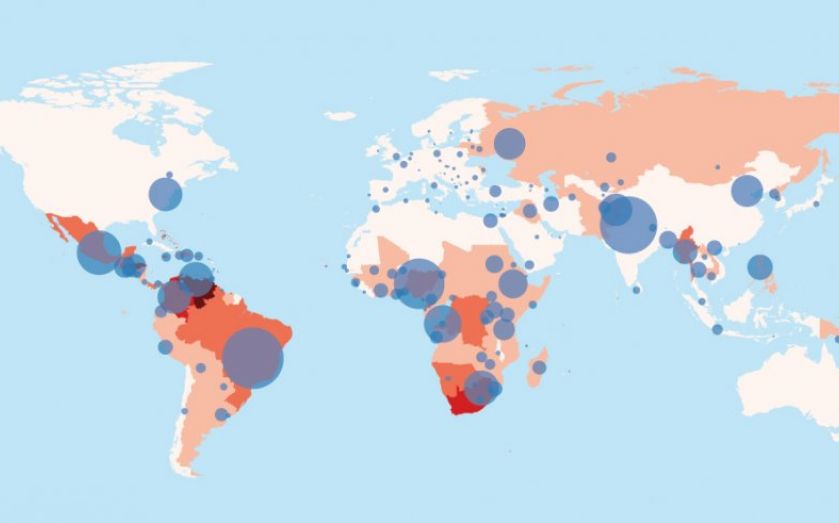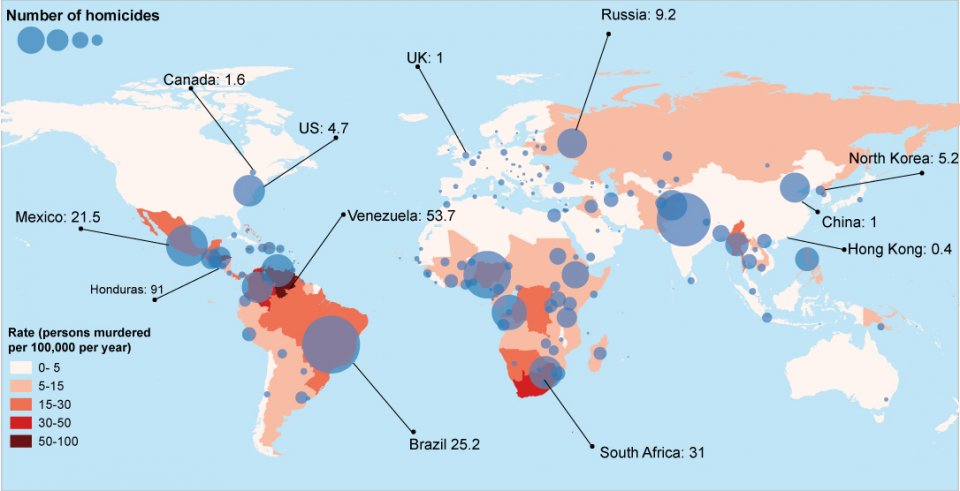Which country has the highest murder rate? Hong Kong remains one of world’s safest despite Rurik Jutting arrest for grisly deaths

After 29-year-old British man was arrested in Hong Kong when police found the bodies of two women in his apartment, Hong Kong must be in shock.
It is not just the grisly details of the case – one of the women was found decomposing inside a suitcase – but the fact that Hong Kong is usually an exceptionally safe place.
The standard measure for murder rates is homicides per 100,000 people per year. That is because countries with larger populations usually have more homicides, so we need a way of comparing different-sized nations.
This rate varies a lot across countries. The UK, for example, has a homicide rate of one person per 100,000 population per year, while the US has a rate of 4.7. Hong Kong has a rate of 0.4 making it the joint fourth safest place on earth, according to UN data.
Here is a map of the homicide rates across the world. The colours of the different nations represent the homicide rate, while the bubbles represent the total number of homicides per person. All the data is from the United Nations Office on Drugs and Crime. Figures are from 2012, or the most recent avialible year prior to 2012.

Here is a closer look at the top ten. Note the famously dangerous nations: Honduras, South Africa, Democratic Republic of Congo.

They are joined by some popular holiday destinations, such as the Bahamas, showing the social problems lying on the other side of the walls protecting gated holiday communities.
Many of the countries on the most dangerous list are on this map, in South and Central America:

Here are the safest 20. The countries on the list tend to be developed democracies, with some exceptions. Some people may well question Hong Kong’s status as a democratic region. The UK is joint 10th.

Hong Kong's 0.4 homicides a year mean its total number of homicides ine 2012 (27) are just a spec on the map.

So what do these rates mean? In his book The Better Angles of Our Nature, cognitive scientist Steven Pinker says that at a rate of round 45, life would be noticeably dangerous, while towards 100 (like in Honduras) you are likely to lose a friend or family member about once a decade.
Homicide rates tend to stay at around one as Pinker explains:
“Even the gentlest society will have the occasional young man who gets carried away away in a barroom brawl or an old woman who puts arsenic in her husband’s tea, so that (one) is about as low as homicide rates ever go.”
Luckily, Pinker concludes that society is on a path to less violencve and fewer wars. In some places, there is still a way to go. For Hong Kong, these tragic murders are the exception to the rule.